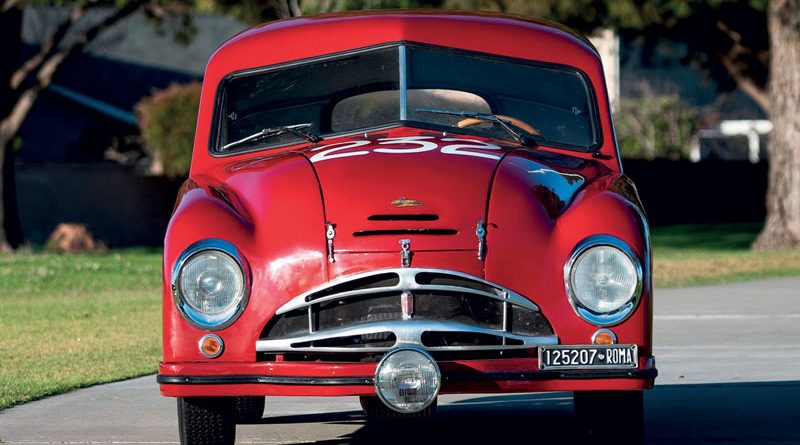Sotheby’s Auctions the only Fiat-Patriarca 750 Berlinetta Sport Faina
Constructed by Rodolfo Patriarca in one single specimen in 1949, the Berlinetta triumphed at the Mille Miglia race in 1950. The car body, manufactured by the Faina workshop in Rome, is almost entirely made out of aluminium
by Giuseppe Giordano
On August 24th, during the auction of historical cars which RM Sotheby’s organizes every year during the Monterey Car Week (California), a rare racing car was presented, almost entirely crafted using aluminium. The car is the Fiat-Patriarca 750 Berlinetta Sport Faina, built in 1949 as a single specimen by Rodolfo Patriarca for the gentleman driver Sesto Leonardi, a passionate pilot of road races which were then very popular in Italy. Among these we find such well-known races as the Mille Miglia and the Targa Florio, in both of which this car took part with excellent results. For instance, in the 1950 edition of the Mille Miglia, Leonardi and Properzi driving this sedan ended up first in its class and twenty-fourth on the global ranking, with an average speed of more than 105 Km/h!
What is striking, when examining the technical properties of this vehicle, is the engineering ability of Rodolfo Patriarca, who was able to exploit chassis and engines normally meant for mass produced cars with performances which did not even remotely match those offered by the Berlinetta. The latter stems from the chassis of the Fiat 500 C, known as Topolino, and the engine derives from the elaboration of such a famous garage as Giannini in Rome. A fundamental aid in reaching racing performances derives from the light aluminium body manufactured in the Roman workshop owned by Mario Faina, who had already designed similar sports car bodies. Aluminium is not only present in the car body but also in the Giannini engine, which includes a “Marino” engine head crafted in aluminium in the Turin-based workshop owned by Marino Brandoli, manufacturer of development sections of Fiat engines. Often in various parts of the engine aluminium alloys were used, including aeronautical alloys such as Ergal (now known as 7075). The Giannini engine developed for the Berlinetta delivered at the time 81hp, which should be compared to the mere 16.5 hp of the mass-produced “Topolino” with a non-tuned engine.
The design of the aluminium body is very simple, to avoid difficult folds on the outside (Figure 1). Interiors are essential, but steering wheel and instruments have a great vintage charm.
Images are remindful of another car built more or less at the same time (with totally different objectives!) with many body parts in aluminium: the first Land Rover with light alloy panels, a famous working car, definitely not a racing car (Figure 5).
The Monterey auction included splendid cars from the Fifties and Sixties. Some Ferraris, Maseratis and Mercedes reached millionaire listings, with the record price for a rare specimen of Ferrari 250 GTO (1962) sold for over 48 million dollars. The sedan did not reach such levels but was auctioned with a starting price of 250,000 dollars, which is not a small amount for what could seem to be just a tuned Topolino but is on the contrary an example of the high quality of Italian craftsmanship in the automotive industry.

